1,000 homes 1,000 chair styles
Here’s an experiment for you I think you might like. I have done this over many years, considered it carefully and it’s never failed me yet. I wish that I had done this throughout my life but I have done it enough to know something you might not realise and may have never considered. When I am invited into someone’s home, stay in a hotel, visit a cafe or a secondhand furniture shop, charity shop, flea market, etc. I make a mental note of the shape, size and styles of side chairs otherwise known as dining chairs, hall chairs, bedside chairs and so on. This led me to this simple conclusion: if you went into 1,000 different homes, places of business, etc, you would find an occasional chair looking like another you saw somewhere but, for the main part, it is more likely that you would see 1,000 different chair styles. I defy you to tell me a different story. I could raise the number to 10,000 and get 10,000 different styles. This is a remarkable phenomenon.
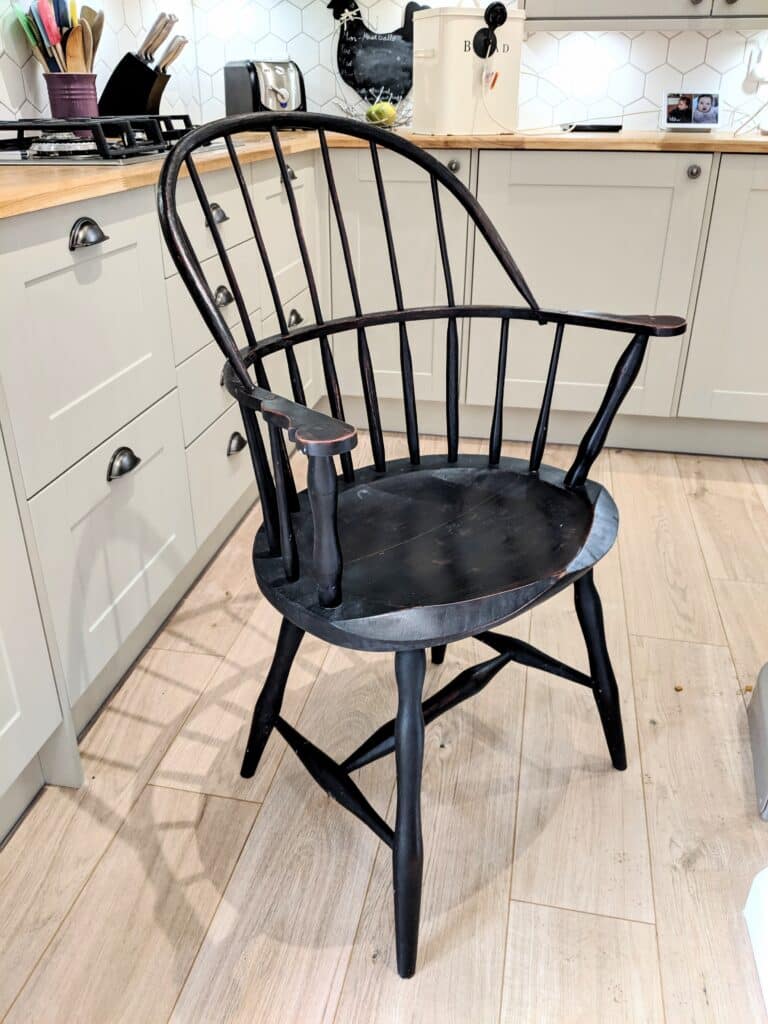
From Windsors to Clissets to Thonet’s and Morris’s, millions of different chairs and different styles throughout the world inspire our world of making today. Some have steam bent, heat bent, laminated, and moulded components. Metal, wood. plastic and composition materials ranging from bamboo resin bonded nutshells hybridise designs and much more. Chairs never cease to amaze me. But the one chair that does stand out from the rest and especially as a cafe chair is the world-famous Thonet chair of which I have written on and spoken of many times.
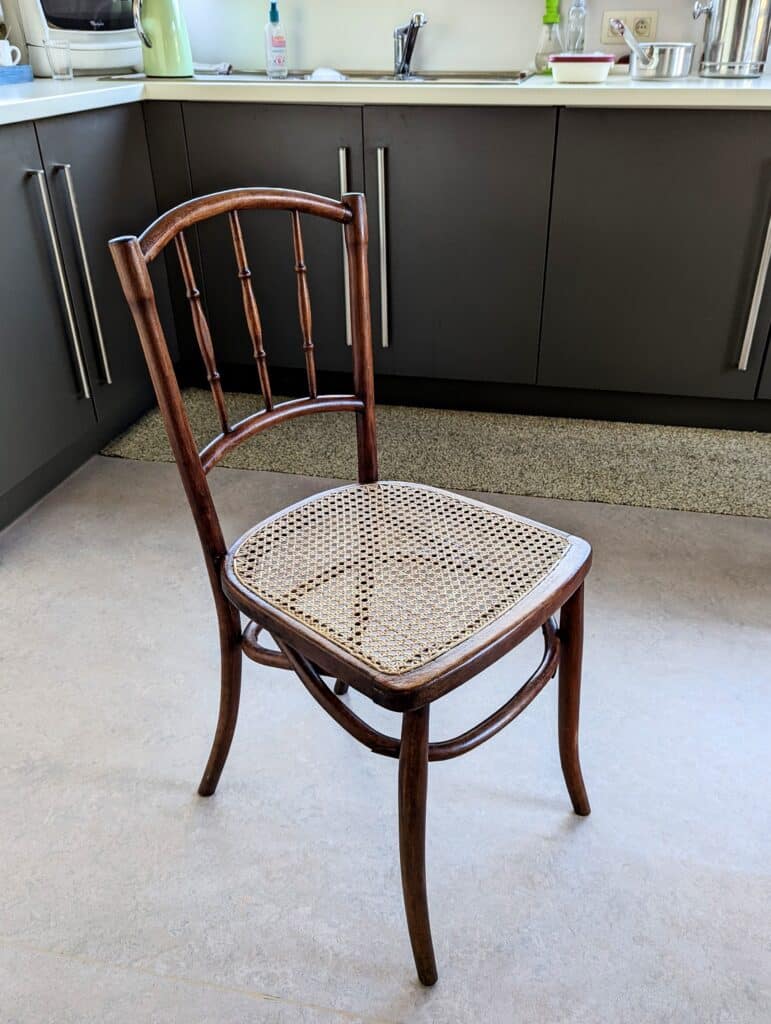
On a recent trip to visit my family in Belgium my cousin’s dining chairs flowed gracefully, could be lifted singlehandedly by a young child and felt perfectly comfortable to sit in. This may seem like nothing but the woven seat had the exact amount of ‘give‘ and no upholstered cushioning would improve the comfort.
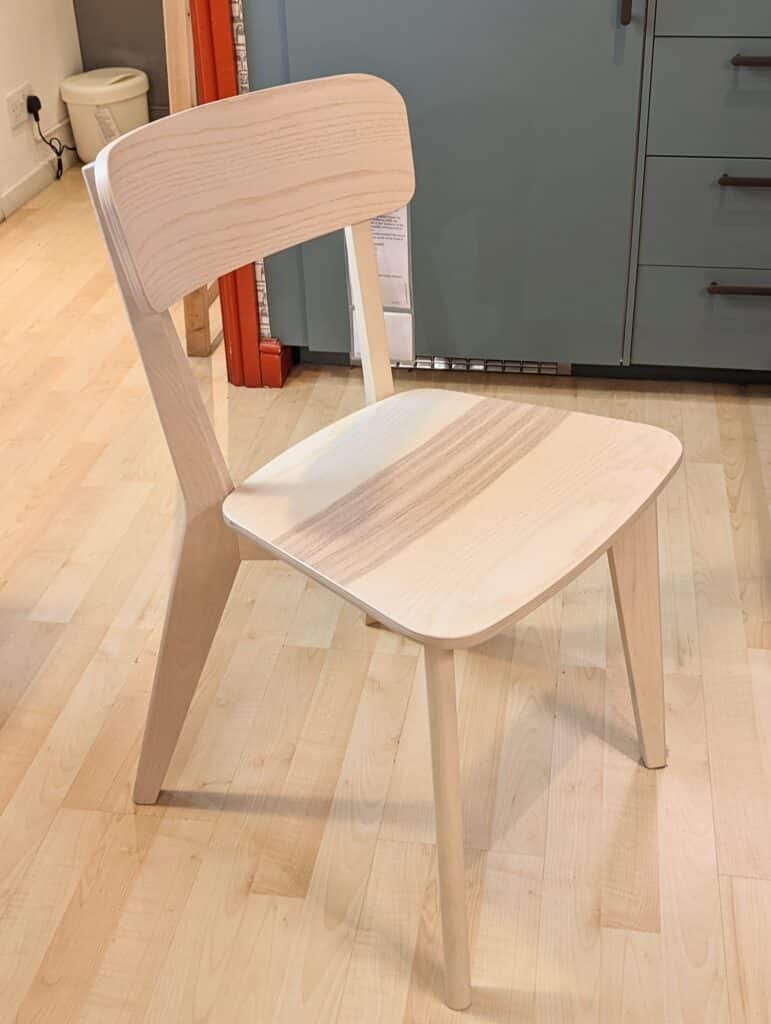
This is an IKEA chair in beech with laminated plywood for the back and seat. Hard to sit on but comfortable to lean back into. These backs to chairs are critical to comfort. Better too big a radius than too tight. It’s a dining chair and not a slouch chair but it works. Below is another IKEA design. Suitable for a slighter person but not a broad-backed, wide-shouldered wide-chested one. The curve is way too tight for larger people. I felt like I was wedged in a barrel.
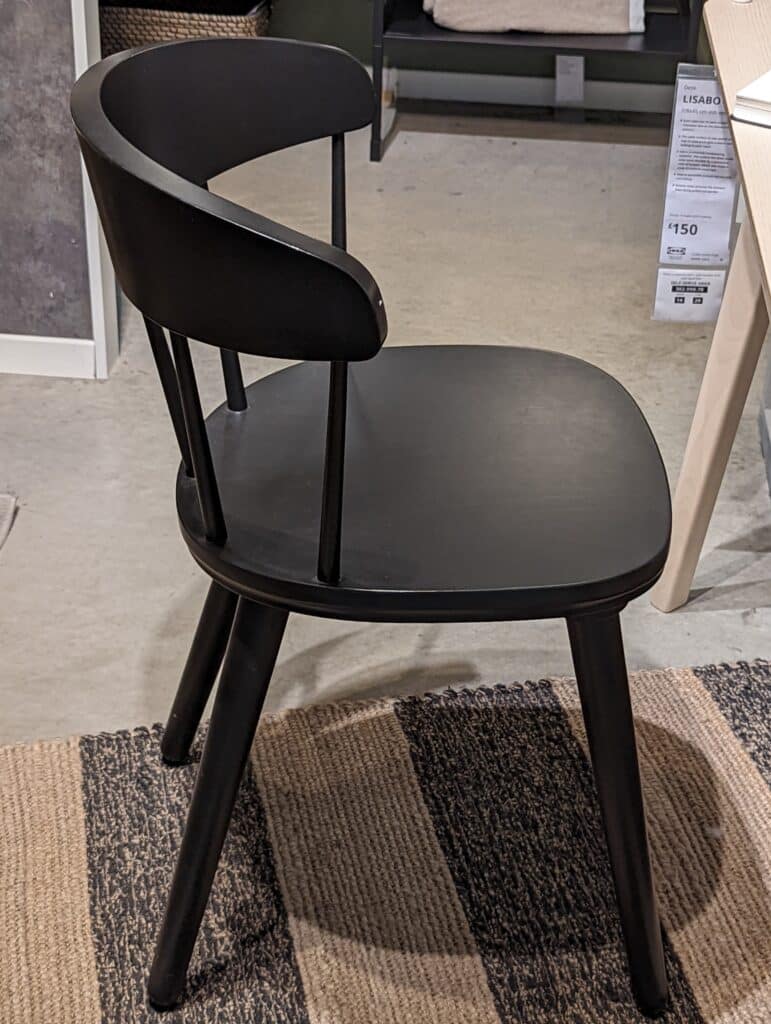
Below is a set of modern Thonet chairs favoured by many cafes for many a good reason. Possibly one of the most long-lasting of chairs for high-abuse settings which is cafes. Cafe chairs are pretty well occupied for eight hours a day seven days a week. They must be lightweight but extremely solid and safe, built to last, small in footprint and, dare I say it, reasonably comfortable. Michael Thonet designed the whole of it and in the face of rejection persevered to make his chair one of the single most long-lasting of chair designs through two centuries to date. Thonet chairs, old and new designs, are still being designed and made 200 years after Thonet developed his opening designs in his newly opened German-based workshops back in 1819. He premiered the designs at the first World Trade Fair or Great Exhibition at Crystal Palace here in London.
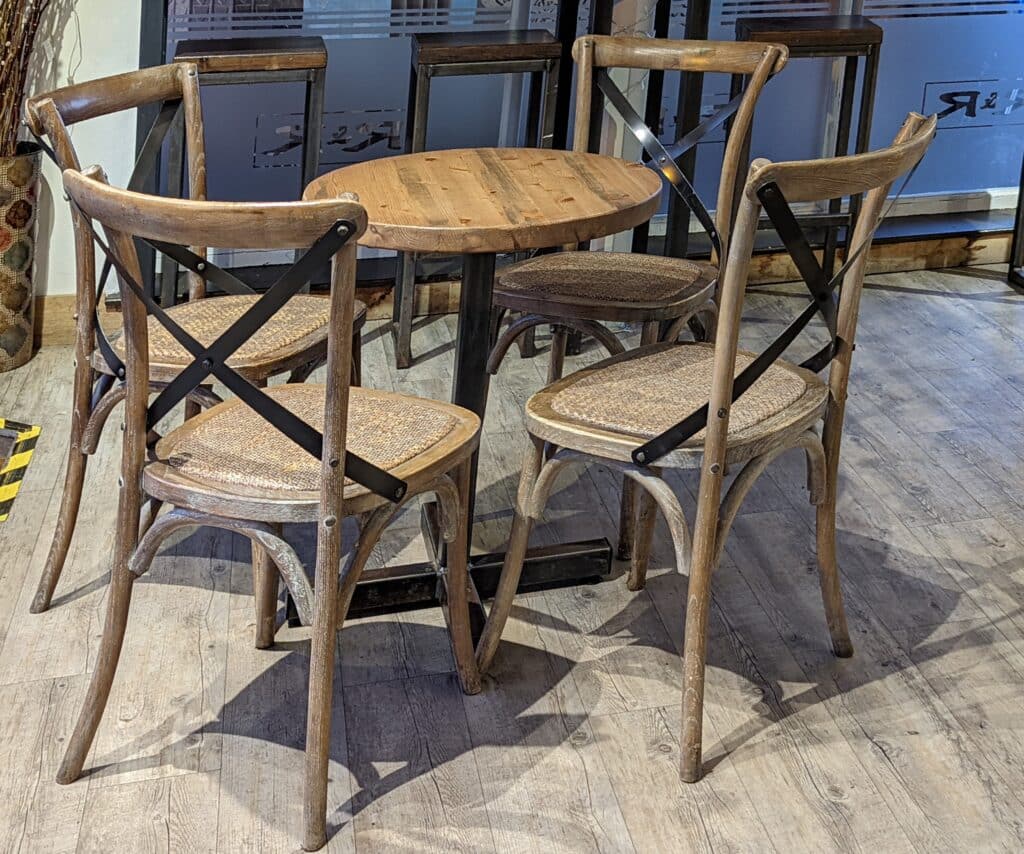
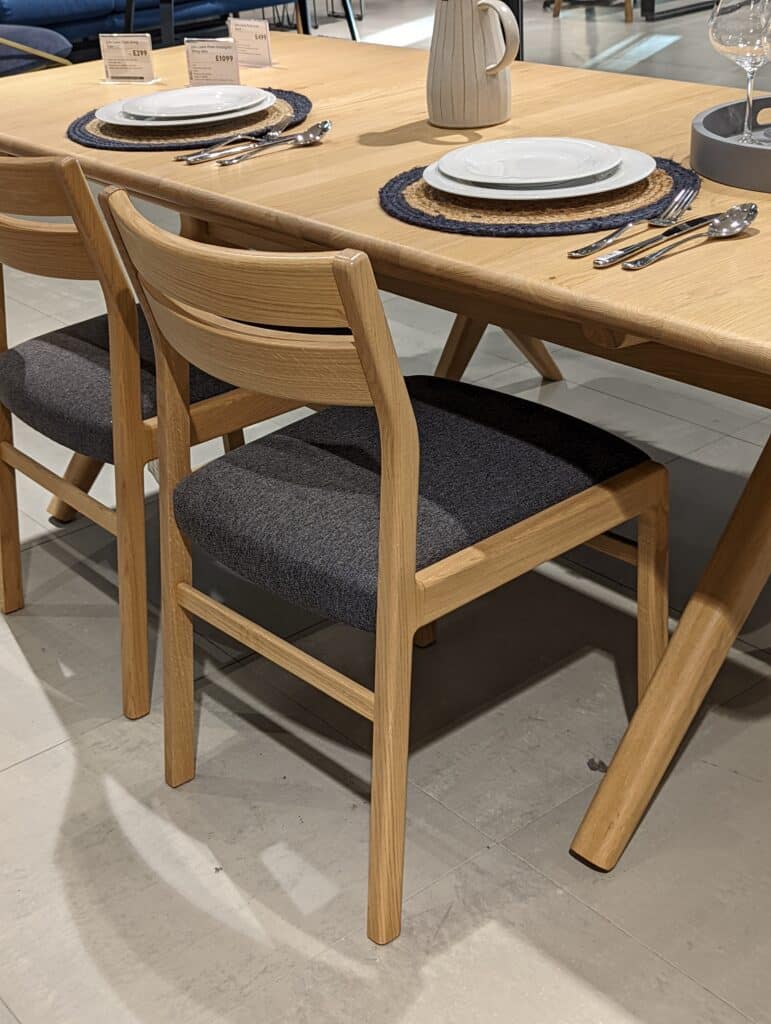
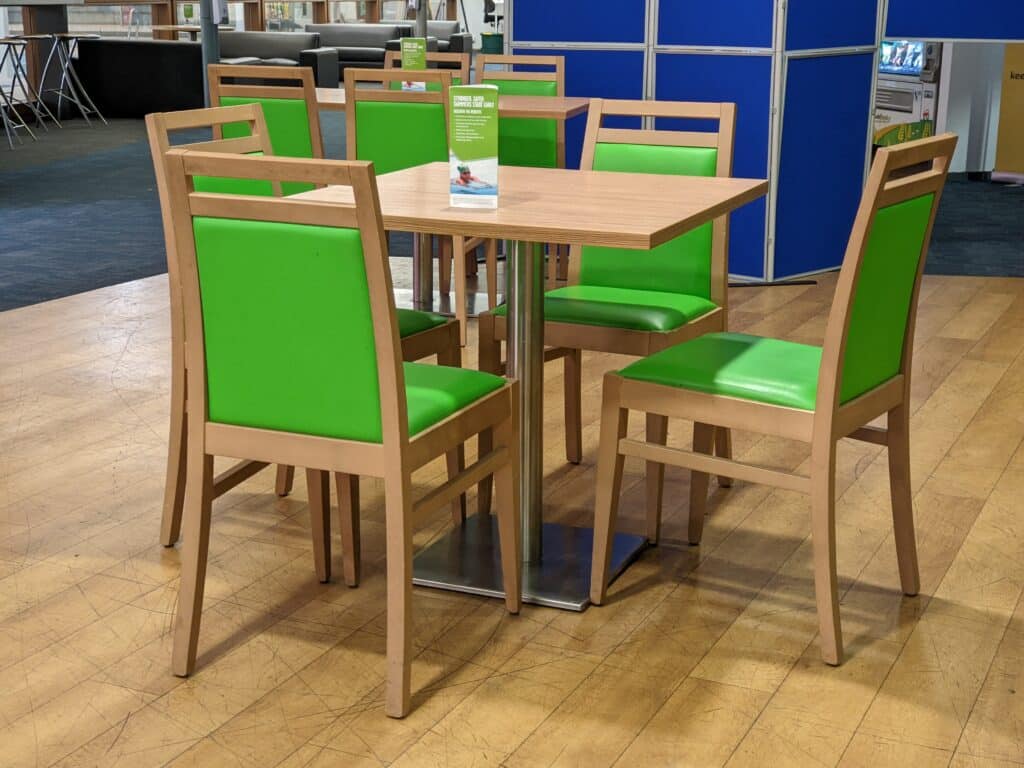
Cafe chairs host as many children as they do adults and a wider splay to the back legs reduces the risk of tipping if children kneel on the chair facing the back. this is a common design detail for cafe chairs and you will notice how often this element is repeated on different designs. Also, notice how much the back legs kick back at the base. All design safety elements built into chairs for use by the public.
Chairs take on more shapes and connection methods than ever in the history of chairmaking. In times past chairs literally revolved around bored holes and round inserts erroneously called tenons but simple spokes and rails tapered to fit the holes and with no shoulders particularly. It was fast and efficient to make chairs this way and could be accomplished by rural makers working in woodlands, directly at the source. By heating the tenons to dry the spindle insert ends, the moisture was removed to the greatest degree and thereby minimise any shrinkage leading to loose rails. The legs being of greener stock then shrank onto the tenons and thereby tightened to them. Of course, the age of the chair bodger ultimately became redundant and chairs were imported as the Industrial Revolution created more and more specialisation. The chairmaking companies of London also yielded to imports from Eastern European makers in places such as Romania.
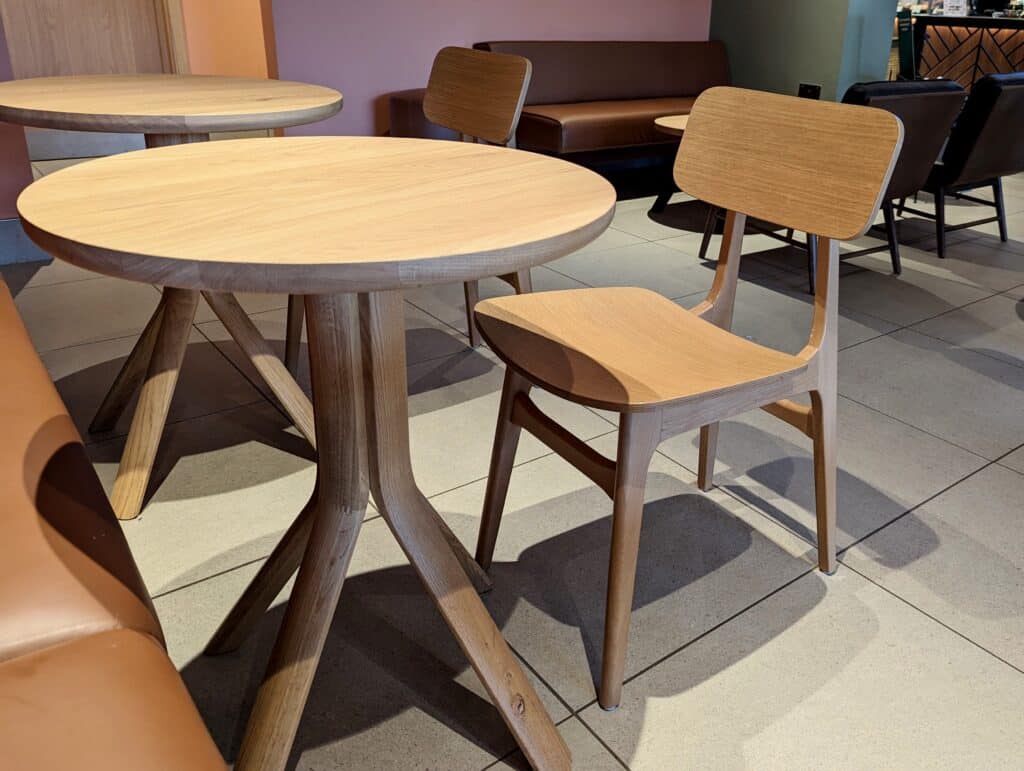
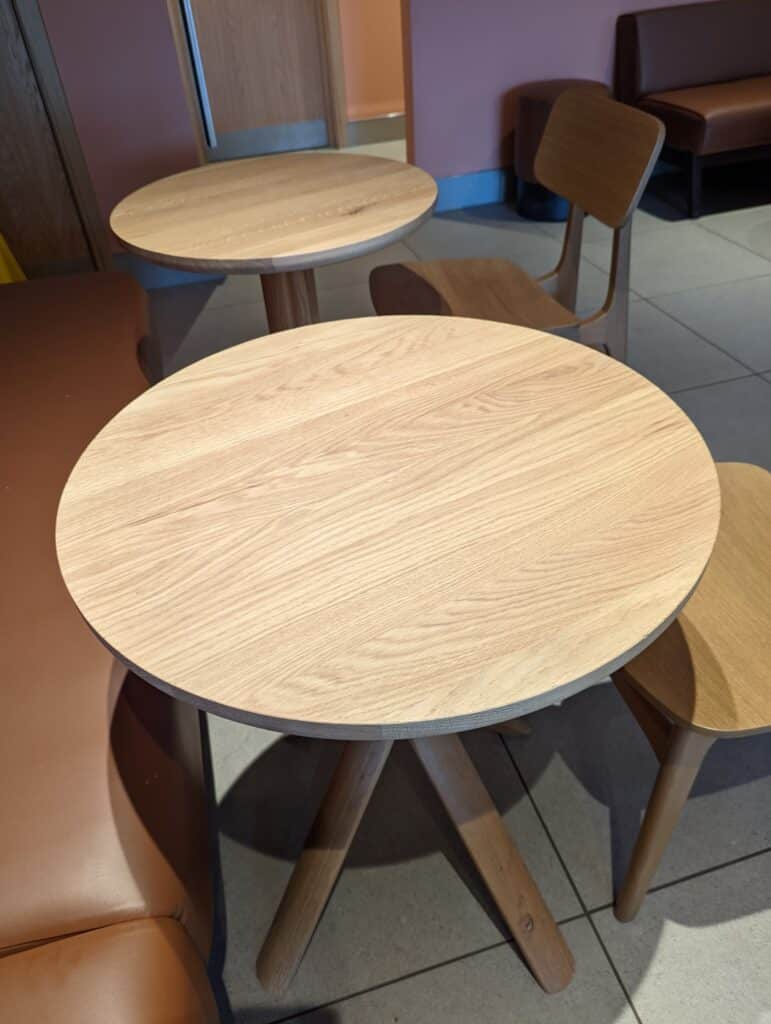
Today, chairmaking has indeed risen to new heights. Designing and then making a chair for large chain coffee houses like Starbucks and Costa can take a designer and maker and make him or her a millionaire-maker overnight. Chairs such as these can be manufactured in a matter of minutes once the sophisticated equipment is sourced to make it. Barely touched by human hand, controlled environments pump out components with the finish on and ready for robotic assembly. manufacturers can supply a finished chair with upholstery on for a fraction of the price we might buy the wood for. Yes is demoralising, but then there are still people who will buy a fairly simple design taking three days to make that will indeed pay princely some for anything handmade and especially if it is a one-of-a-kind design. My rocking chair here sold mostly for $6,500simply because it could not be found elsewhere. Studio makers with an established reputation can sell their wares for much more than I might but I never entered that arena.
The video series I recently completed for Sellers’ Home was a challenge. I did not want to copy any other work but then of course we are all influenced by what we see in one way or another.
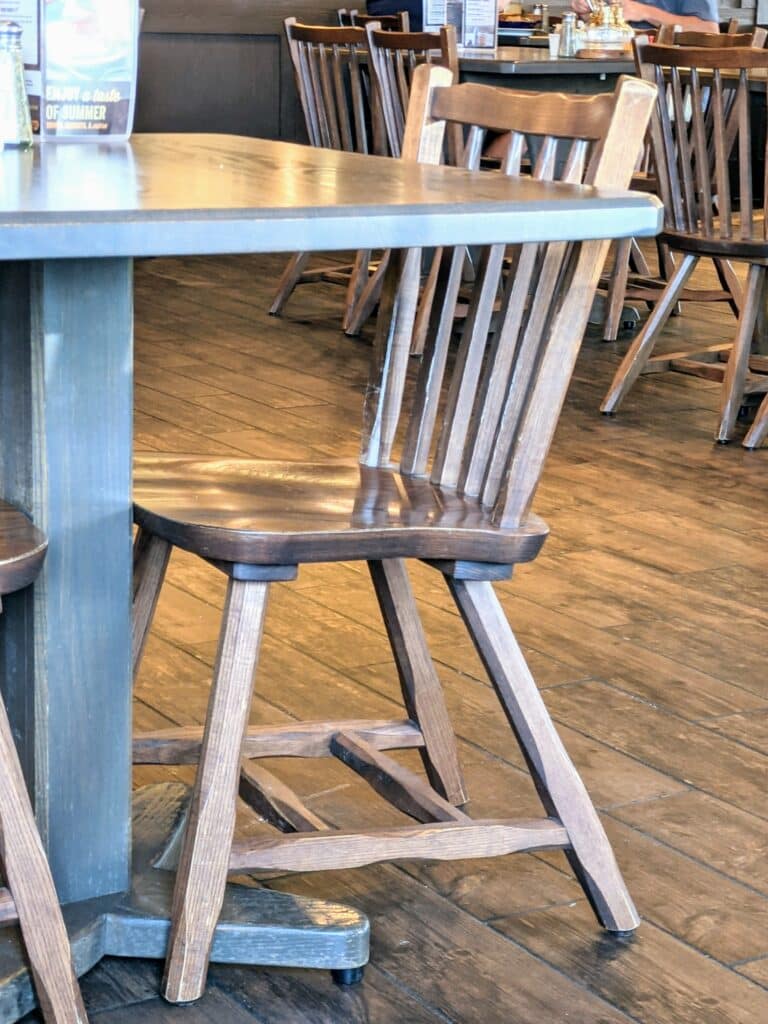
Anyone familiar with the Cracker Barrel chain of restaurants in the USA will know this dining chair that has been the mainstay of seating in their cafes for at least three decades and more. It’s robust and solid as well as comfortable. “Why change what ain’t broke?” It has the country appeal of Cracker Barrel, goes with the “pancakes ‘n’ grits” and also with the catfish suppers, iced tea or coffee and also with the wall decorations too.
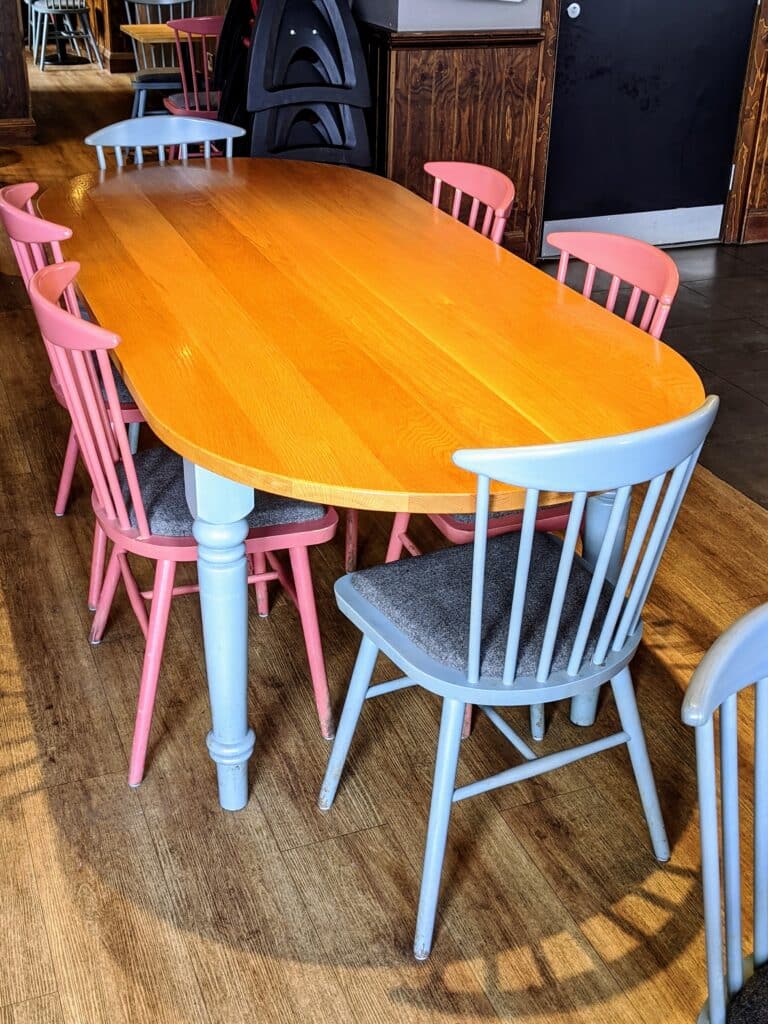
Above and below are an older style of chair design in the Costa chain of coffee houses. This design has remained unchanged for a hundred years of mass-production chairs.
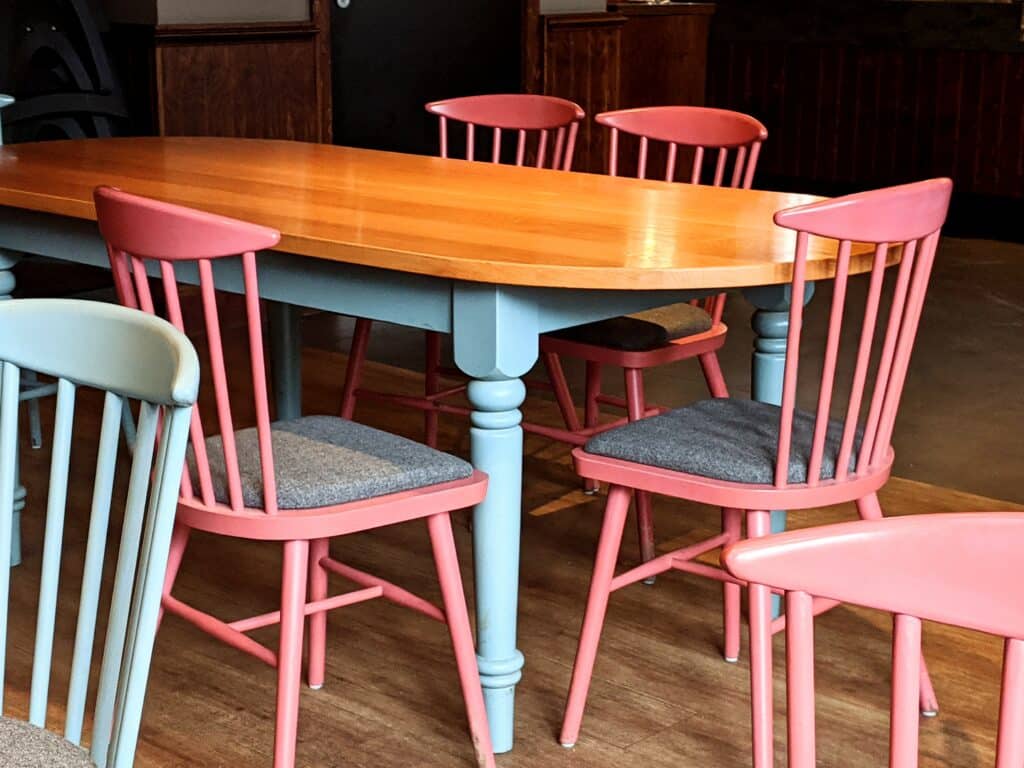
A plywood airport chair in the USA . . .
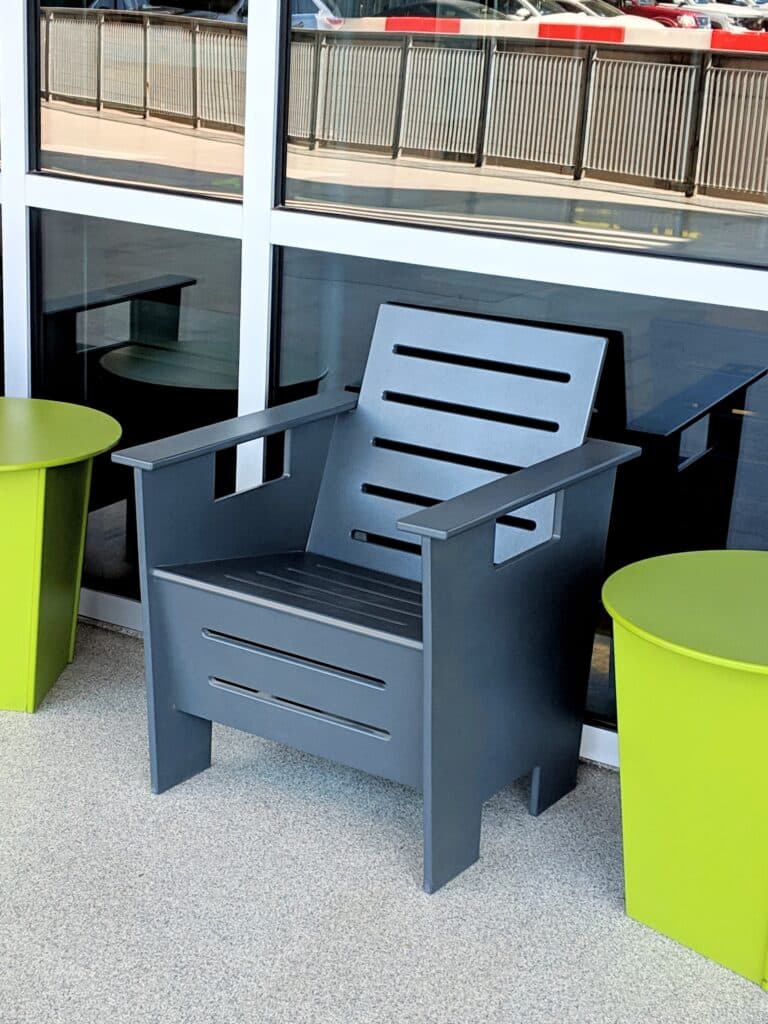
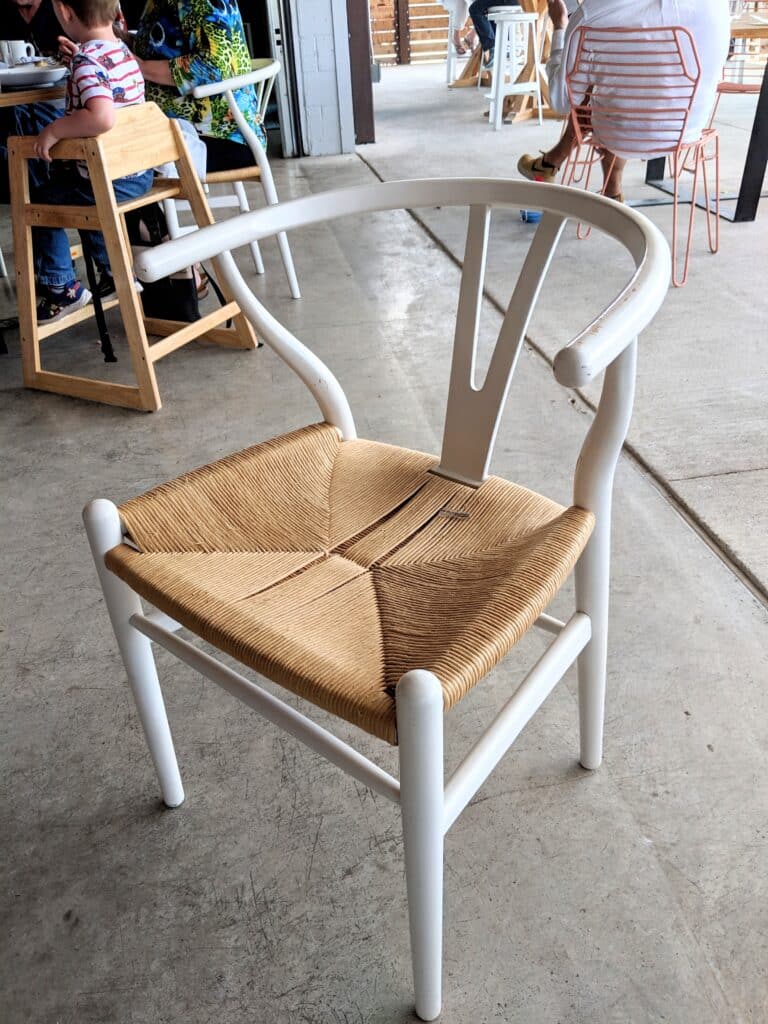
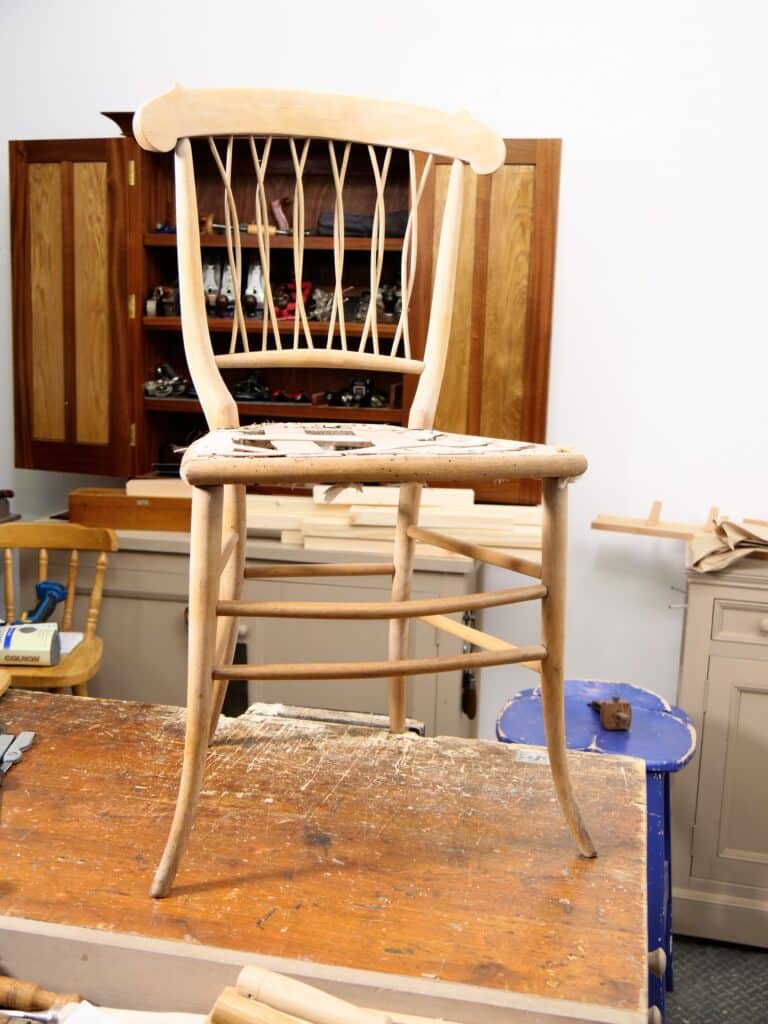
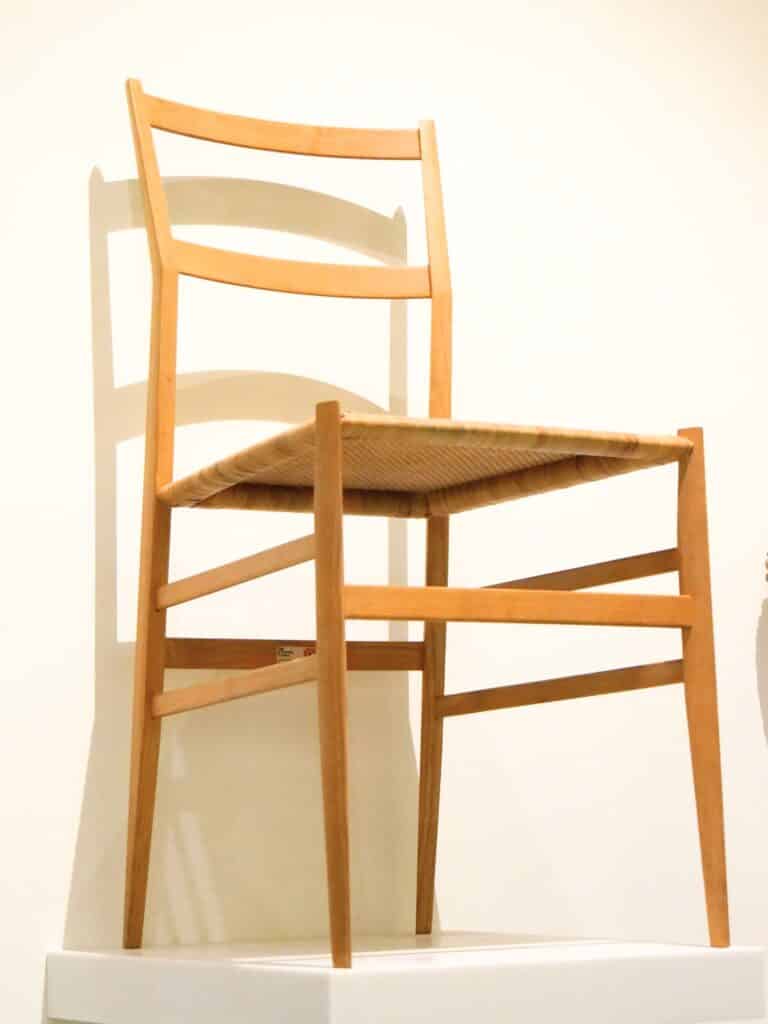
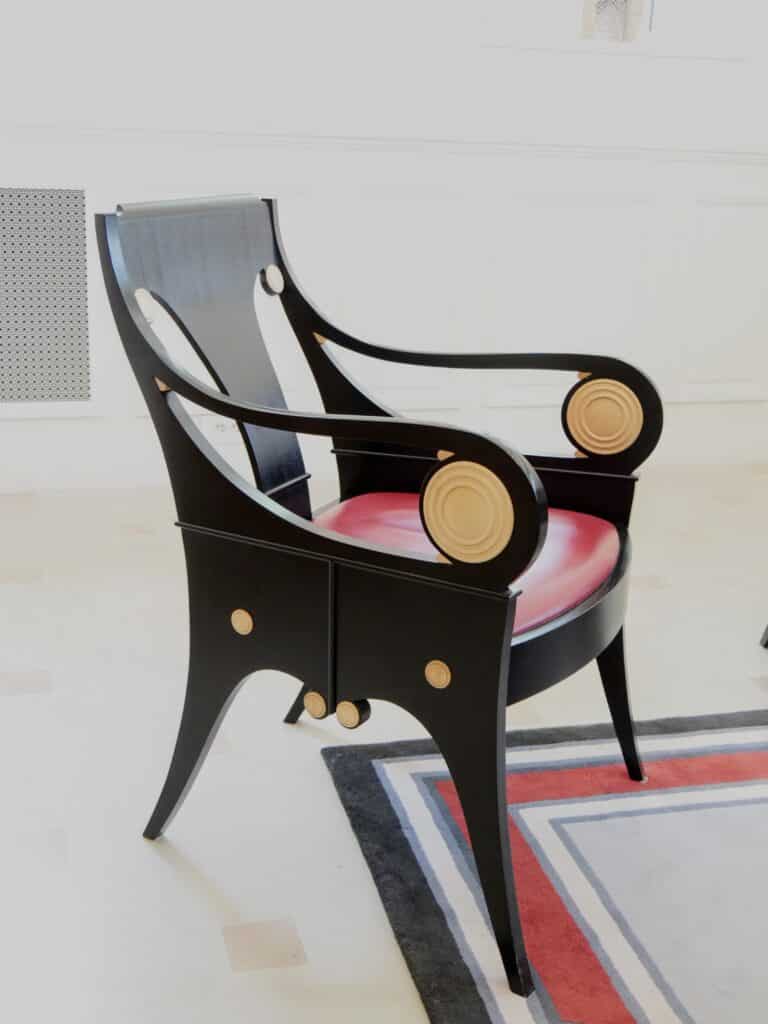
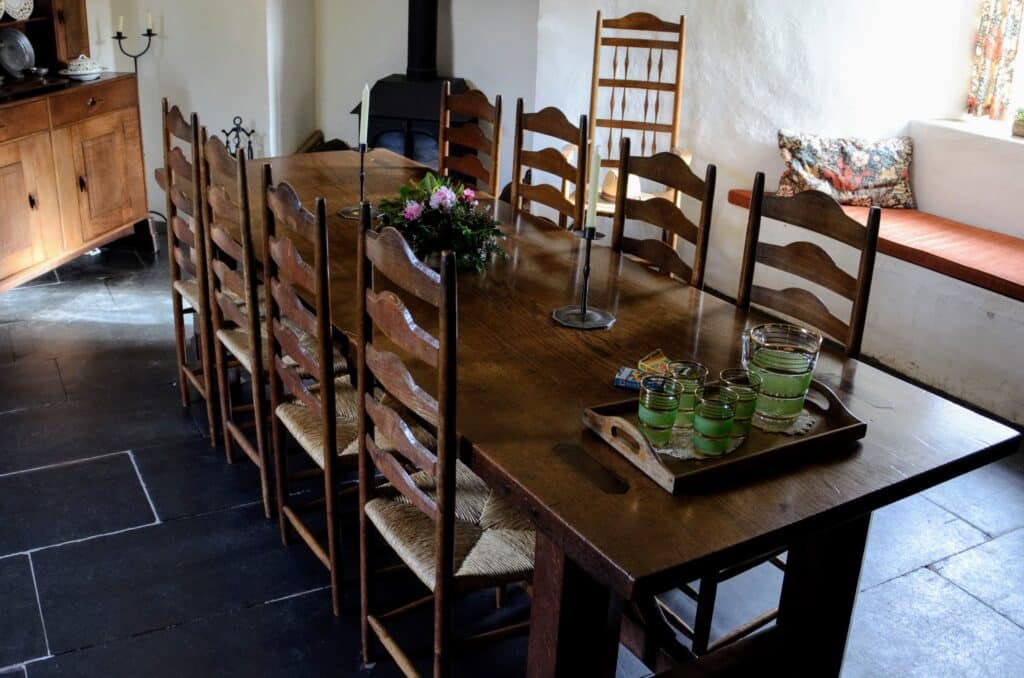
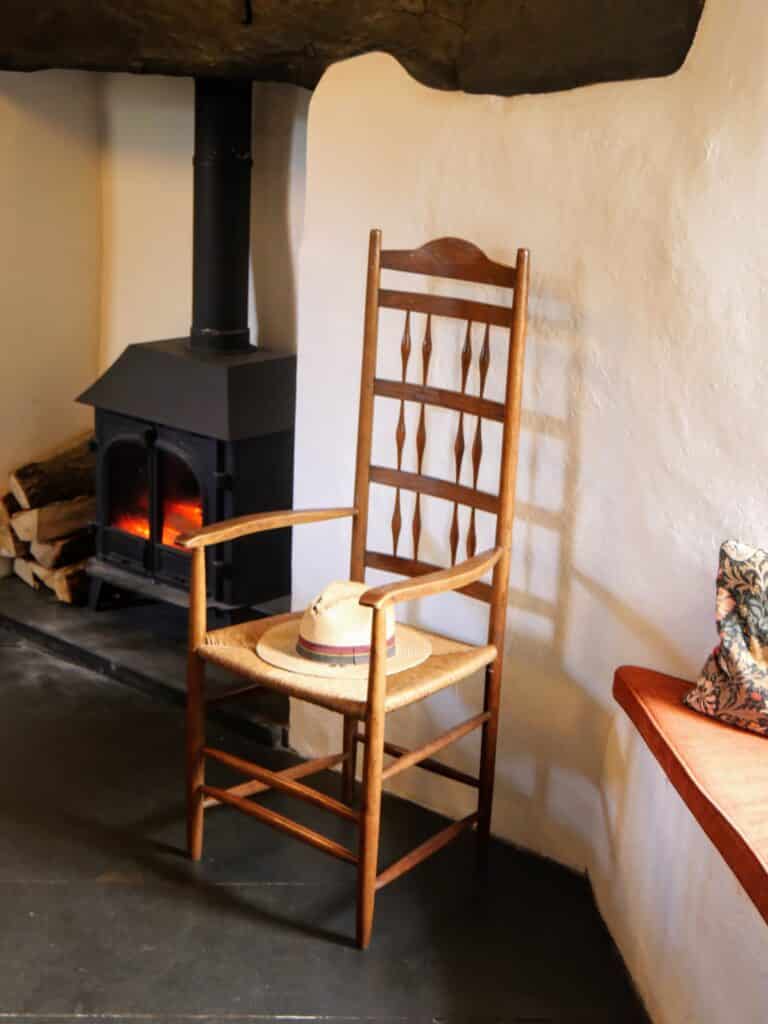
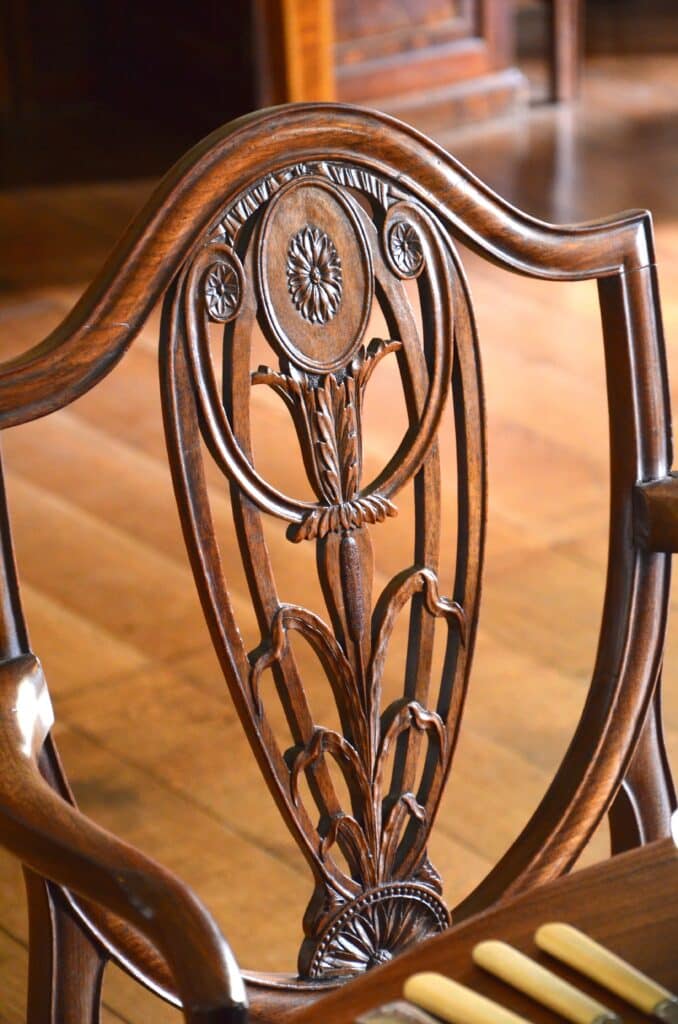
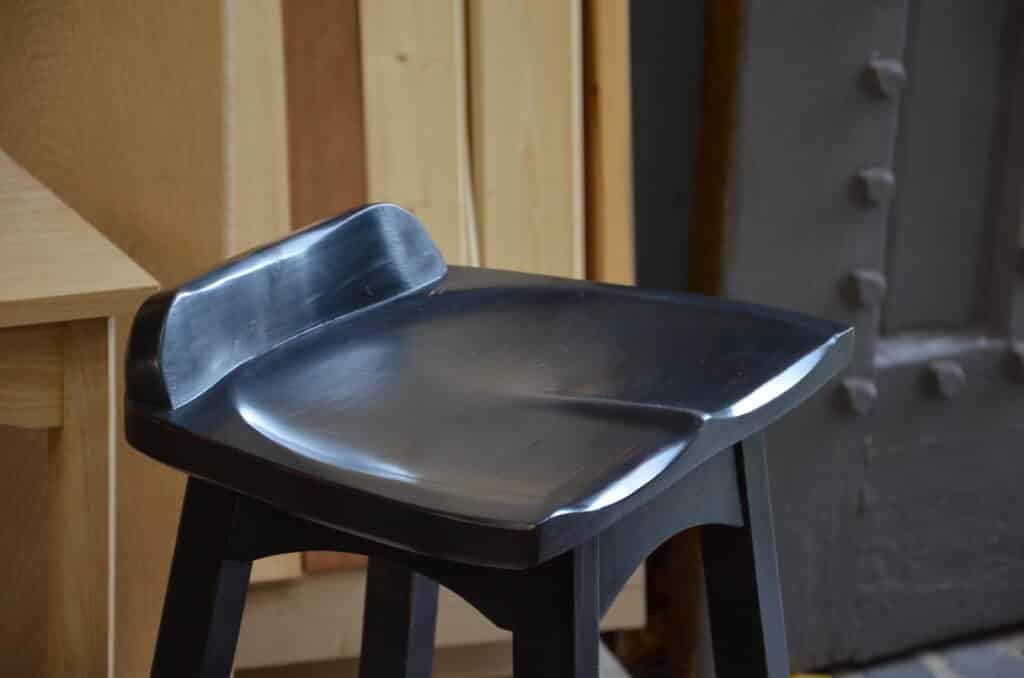
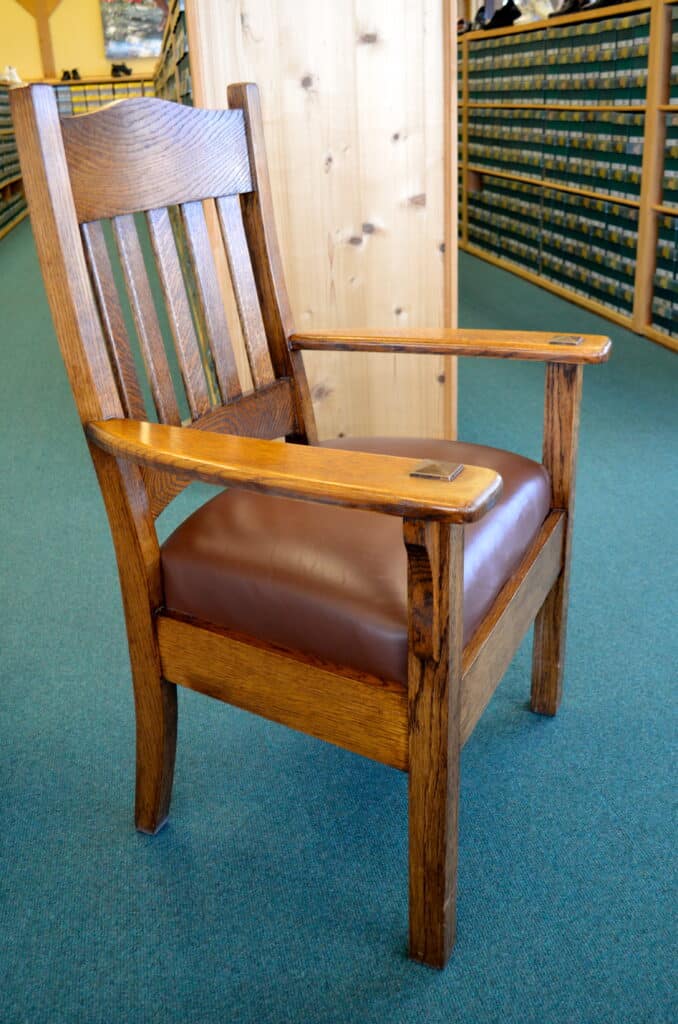
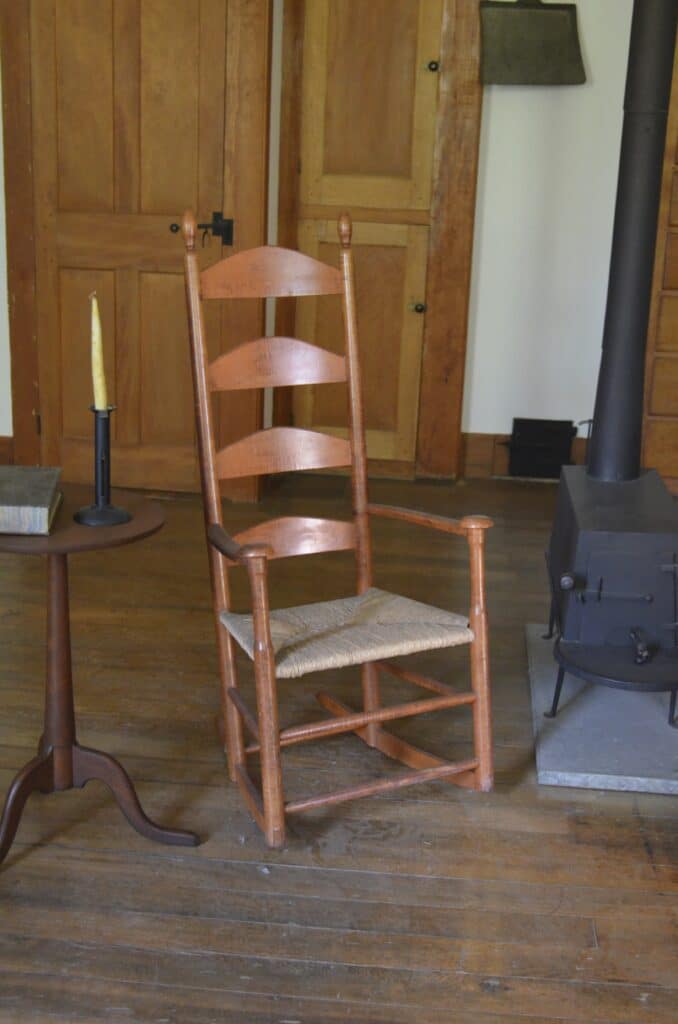
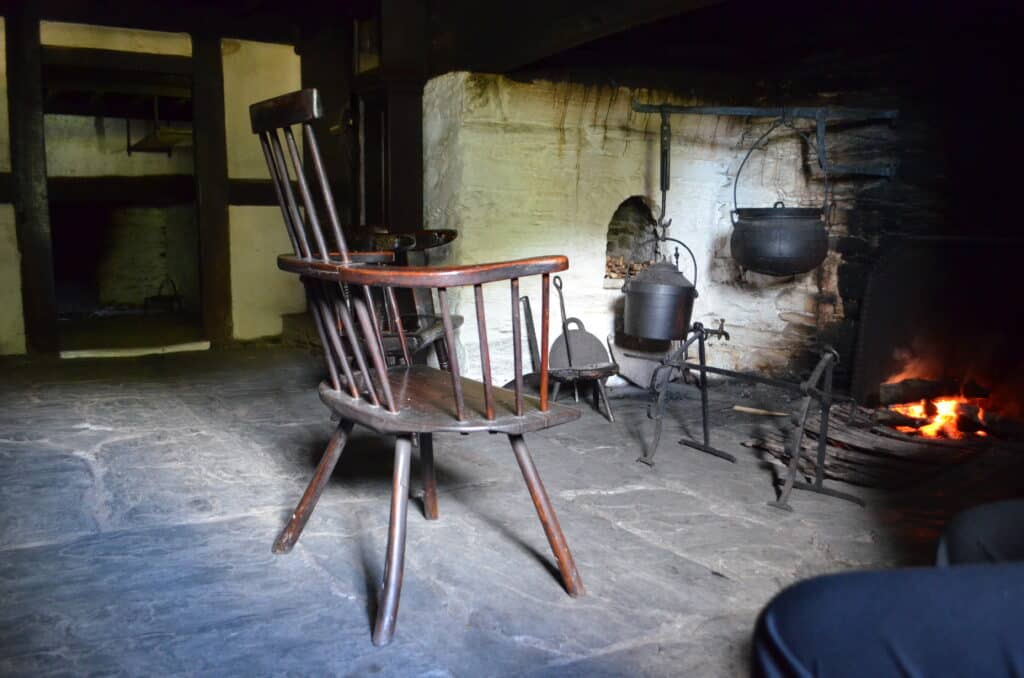
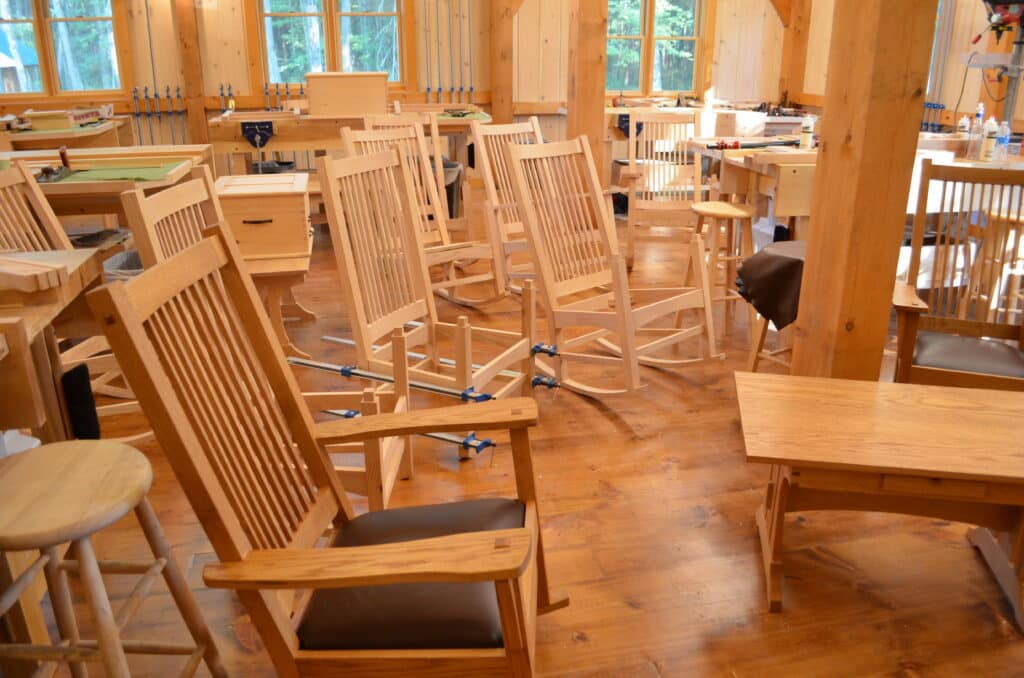
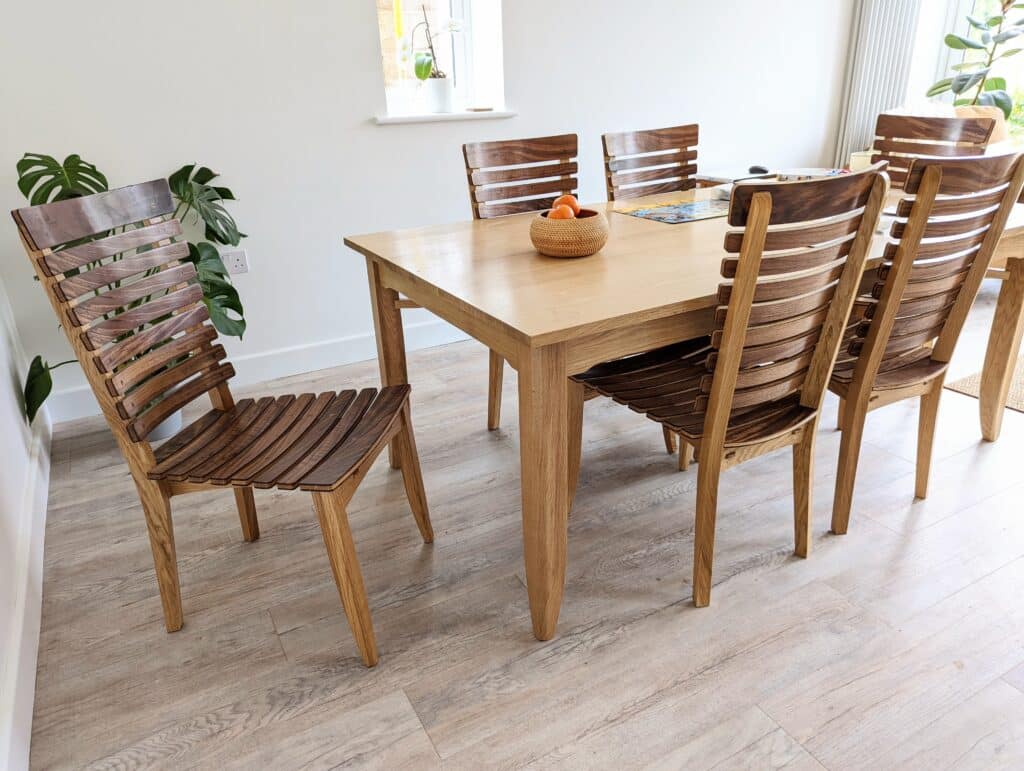
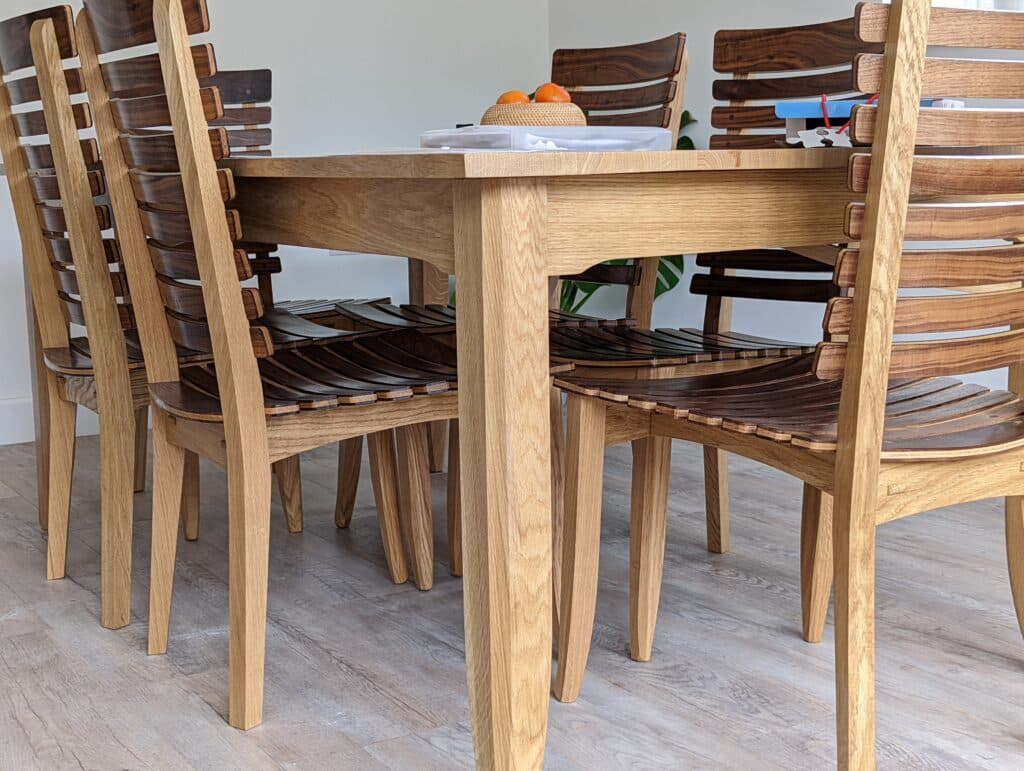
And last, but not by any means least, there is the Paul Sellers’ latest design for Seller’s Home dining which is currently featuring on woodworkingmasterclasses.com. The table and chairs are my designs and currently, I am working on an additional piece which is a wall-hung drinks cabinet, also in oak.
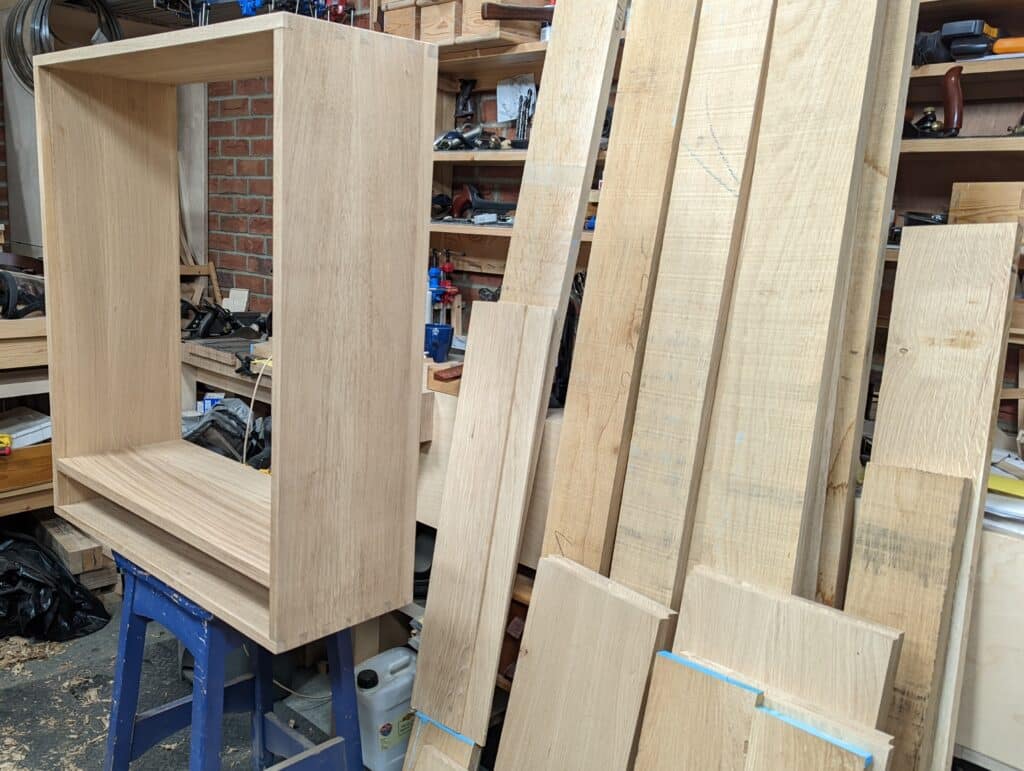


Paul,
A very good and inspiring article. Thanks for your work. I’m very interested in building some chairs, so this advice helps me no end.
Warren
Really enjoyed the visual tour of all the chair styles as viewed from a woodworker’s perspective. Thanks.
In the structure of the IKEA beech chair of the 3rd picture, I see some commonality with the “Sellers Home end table” from December 21.
A low table makes a stool, adding a back makes it a chair (changing the slopes to make it comfortable and splay for safety).
Starting from the masterclasses projects, one acquire the skills to make variations of them. (with a bit of creativity).
That’s the whole plan, Sylvain, no question. I want people to take the coffee table and consider a dining table if twice the length, width and height, or thereabouts. Stepping stones to greater things.
A lovely and informative post.
We can learn a lot by simply looking carefully at the world around us.
A trained eye like yours makes it more enjoyable.
I have one antique Windsor Chair and a set of 12 bench made Windsors by a New England Craftsman. The combination of riven wood and the differential drying
technique you describe, makes them feel like a single piece of wood.
If you pick them up and strike them with a Mallet, they Ring like a Bell.
Thanks for another great post
Thanks for the great article Paul! Another amazing and comfortable chair, the Equapales. An ancient Aztec design. Comfortable and still made today, mostly of Mesquite. I’m sure Paul encountered them in Texas, just over the border from their place of origin!
Love your chairs they are my favourite of all the pictures here. You certainly have an eye for design and concept and not forgetting proportion and style.
Really good article. I have taken to sitting on the floor more regularly, which has done wonders for my joints and flexibility. Having worked in offices for years, I think the best chair are the ones that don’t encourage you to sit in them for hours! I like the feel of wood at my back on a chair, that massages but never gets too comfortable (possibly just my form!) and forces me to change position regularly. A chair is not a sofa of course, and I expect the majority of the issue comes not from the chair, but the activity (watching TV, being on a PC or laptop). I have a small chair in the garage, which leaves my kness around chest height, but it’s great for whittling and carving in. I’m currently trying to work out a design for a floor sitting desk for working from home. I need it to be adjustable, so that I can kneel or sit on a cushion, cross legged or legs under. Chairless working!
Didn’t Thomas Jefferson have a “Lap Desk” made to his order and specifications? Might be a jumping off point for ideas.
Nice article, but I don’t believe there is a correlation between the number of houses and the number of chairs (designs). At home we have at least 5 different chairs (dining room, lounge, study, bedrooms, garden). Add places like IKEA to the equation and you will shift the balance in the other direction. We also have to consider that not all houses have exclusive chair designs (thanks to places like IKEA) and they will share the same designs with many homes.
These facts aside, the point of the article that chairs are amazing things holds no matter the numbers. There are some that are beautiful, some that are functional and a lot that are both things at the same time, and all in different degrees. And there is another factor that is, I believe, the most important: the process of designing and making a chair.
I loved this post. I love chairs and am also fascinated by their myriad design possibilities though certainly not as cognizant of them as you are.
One of my favorite styles is Neat and Plain, a late-18th c. American rococo offshoot that has the elegance of that century but not the ostentation. The furniture museum at the Colonial Williamsburg living museum in Virginia has a wonderful collection of pieces in this style. Ever been?
Nice collection of chair designs. I find it ironic that someone who loves chairs so much can also be quoted as saying “I don’t sit down to do much of anything.” That made me laugh.
A bit surprised the Civil War era Officers Folding chair wasn’t in the list. One of most comfortable folding chairs.
Paul,
Again, a great read. Inspirational, informative and a great break on my constant travels as a COO for a Software Company. As I think of my home, it is funny to note that this is true as I move from room to room. My guest room has a simple upholstered chair, while the “library” has 4 kinds of chairs ranging from late 18th century sabre leg walnut chairs from England, to a large red velvet Victorian, an Eastlake and several rockers. The dining room has large upholstered chairs, the kitchen 4 wooden bar stools, and some painted chairs from Mexico…. I could go on, but point being you are so right, as usual.
Great survey Paul! A very useful resource for reflection. One small thing – the museum in Wales is St Fagans.
Wonderful Paul a great roundup of chair making. However in my opinion you missed an amazing maker of modern times. David Colwell and Trannon furniture a truly innovative designer especially of steam bent ash furniture. He recently has made steam bent chairs and tables, bandsawn straight from the tree ( no planing , no waste) steam bent and seasoned by kiln drying after the components are made. Fixings are large hollow copper rivets. Innovation, no waste technology. Brilliant.
I didn’t really miss one, I missed a hundred thousand and more! Also, kiln drying is the opposite of seasoning though I agree the term is usurping what is actually force drying as an accepted term simply because proper terms are being lost and then forgotten.
Hello Paul, and thanks for your attention to details great and small. Wondering do you know the maker of the “starbucks” chair or where I could buy one? My mother is injured and that is the only chair she is able to sit comfortably in so I’d like to get one for her asap.
with thanks,
Andrea
I think most of these major players will buy the unique designs and have ownership of them in their entirety. In other words, they may well buy the designer’s design lock, stock and intellectual property as these things become part of the fuller brand by which they identify themselves as ‘Starbucks’, IKEA, MacDonalds and so on. I doubt that you can buy the design.